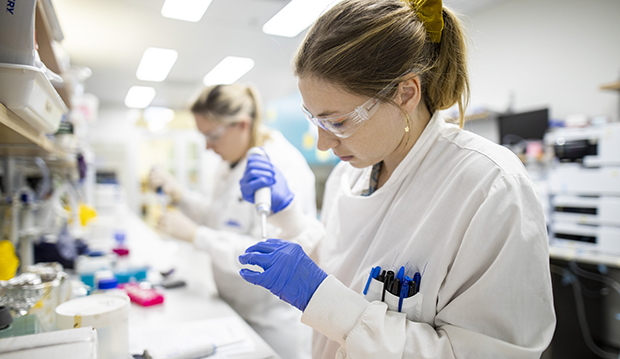The ‘s COVID-19 vaccine has passed another important milestone, showing the ability to raise high levels of antibodies that can neutralise the virus in early pre-clinical testing.
UQ was tasked by the (CEPI) to use its vaccine technology to develop a coronavirus vaccine, and has collaborated with the (Doherty Institute) to demonstrate and understand its immune response.
UQ project co-leader Professor Paul Young said the results were an excellent indication that the vaccine worked as expected.
“This is what we were hoping for, and it’s a great relief for the team given the tremendous faith placed in our technology by CEPI, Federal and and our philanthropic partners,” Professor Young said.
“We were particularly pleased that the strength of the antibody response was even better than those observed in samples from COVID-19 recovered patients.”
University of Melbourne Professor Kanta Subbarao, from the Doherty Institute, tested samples provided by the UQ team and found high levels of antibodies capable of neutralizing infection by the live virus in cell culture.
“This is a very important finding because similar immune responses with SARS vaccines in animal models were shown to lead to protection from infection,” Professor Subbarao said.
 These results, along with the collaboration with Viroclinics Xplore in the Netherlands, keeps the UQ vaccine’s accelerated timeframe on track.
These results, along with the collaboration with Viroclinics Xplore in the Netherlands, keeps the UQ vaccine’s accelerated timeframe on track.
Joint UQ project leader Dr Keith Chappell said the team had decided early on that ensuring a robust package of pre-clinical and safety data was critical before initiating a clinical trial, and they hoped to have those results in early June.
“Viroclinics Xplore is investigating in more detail the vaccine’s ability to protect from direct challenge by the live virus in multiple animal models, and without this partnership this just wouldn’t have been possible in this time frame with the capabilities we have here in Australia,” Dr Chappell said.
The group recently announced a collaboration with Cytiva to enable key manufacturing activities and discussions are ongoing with other commercial entities.
Program Director Professor Trent Munro said that every day mattered in the race to bring this science forward, and while there were no guarantees of success, the support received to date was letting the team move at an unprecedented speed.
“When you start combining clinical readiness with scale-up manufacturing, the costs quickly escalate and our primary goal here was to try and break down the financial constraints as much as we could,” Professor Munro said.
Other commercial partners include Lonza, Thermo Fisher Scientific and Syneos Health, and the team has also been given access to key adjuvant technology from CSL/Seqirus, Dynavax and GSK.
Images, captions and overlay are available via .







